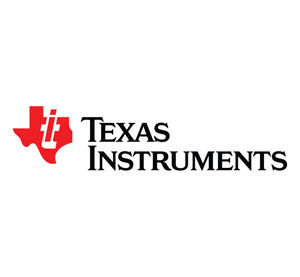DALLAS, July 2, 2012 /PRNewswire/ -- Texas Instruments Incorporated (TI) (NASDAQ: TXN) announced that G. Clifford Carter, an engineer whose pioneering contributions to determining and using coherence and time-delay estimation have had lasting impact on the field of signal processing including sonar detection, classification and localization, was honored by IEEE with the TI-sponsored 2012 IEEE Jack S. Kilby Signal Processing Medal. The medal was presented on June 30, 2012 at the IEEE Honors Ceremony in Boston, Mass.
"I am delighted to culminate a long career with receipt of this IEEE medal," said Carter. "The Jack Kilby medal has been awarded to several signal processing experts whom I greatly admire. I am deeply honored and humbled to be in the company of previous Kilby award winners."
"TI is excited that Clifford Carter is joining the ranks of 15 years of honorees. We share Carter's commitment to addressing the world's challenges with new and innovative technology," said Martin Izzard, vice president and director, R&D Labs, TI. "Carter's lifelong dedication to advancing signal processing makes him an ideal recipient of a medal ascribed to Jack S. Kilby, the co-inventor of the integrated circuit. Kilby's invention was essential to the development of the signal processor and digital signal processing, and TI is proud to sponsor a medal that inspires continued innovation in this field."
The 2012 Jack S. Kilby Signal Processing Medal recognizes Carter for contributions to the fundamentals of coherence and time-delay estimation and to underwater acoustics signal processing. Carter's work revolutionized the field of signal processing and resulted in rapid improvements to acoustic sensors and processors. His algorithms are used today for detection, classification and localization of signals in applications ranging from underwater acoustics to health care. He has developed signal processing algorithms used by the U.S. Navy in its submarine fleet, and his patented work has helped provide technological advantages the U.S. Navy will need to maintain superiority in the future.
Carter's research on generalized correlation methods for time-delay estimation resulted in what is considered a landmark paper in the signal processing field. Published in 1976, he presented powerful methods of statistically optimum processing for estimating the relative delay of a random signal received through two paths by two sensors in the presence of noise. The generalized correlation algorithm became one of signal processing's most fundamental algorithms. This algorithm, or one of its variants, is still used in U.S. Navy signal processing systems today. The paper has been cited over 1,100 times and has spurred advancements that have benefitted radar, sonar and wireless communications applications.
Carter's pioneering work on defining and statistically characterizing the coherence function and providing an algorithm was significant to the development of high-definition sonar. He helped determine the limitations on length and resolution for sonar arrays necessary for handling partially coherent oceanic noise fields. Carter provided an understanding of how to measure signal coherence in these noise fields and determine confidence limits. His automatic coherent processing algorithms are used in the U.S. Navy's acoustic surveillance processing systems.
Carter's more recent patented work includes a close-range sonar system that provides sufficient warning to allow maneuvering to avoid collisions. His method can handle the ship's forward port/starboard areas, overcoming the signal processing problems presented by ship's own noise.
An IEEE Life Fellow, Carter is a member of the Acoustical Society of America, the U.S. Naval Institute and the Naval Submarine League. His honors include the IEEE Henry Diamond Memorial Award (2006). He received a bachelor's degree in engineering science from the U.S. Coast Guard Academy and master's and doctorate degrees in electrical engineering from the University of Connecticut, Storrs. Carter retired from the Naval Undersea Warfare Center Division Newport, Newport, R.I., in 2009 as a senior technologist for acoustic signal processing, where he was responsible developing and implementing innovative technology for the future of undersea warfare.
About Texas Instruments
Texas Instruments semiconductor innovations help 90,000 customers unlock the possibilities of the world as it could be – smarter, safer, greener, healthier and more fun. Our commitment to building a better future is ingrained in everything we do – from the responsible manufacturing of our semiconductors, to caring for our employees, to giving back inside our communities. This is just the beginning of our story. Learn more at www.ti.com.
SOURCE Texas Instruments Incorporated
WANT YOUR COMPANY'S NEWS FEATURED ON PRNEWSWIRE.COM?
Newsrooms &
Influencers
Digital Media
Outlets
Journalists
Opted In





Share this article